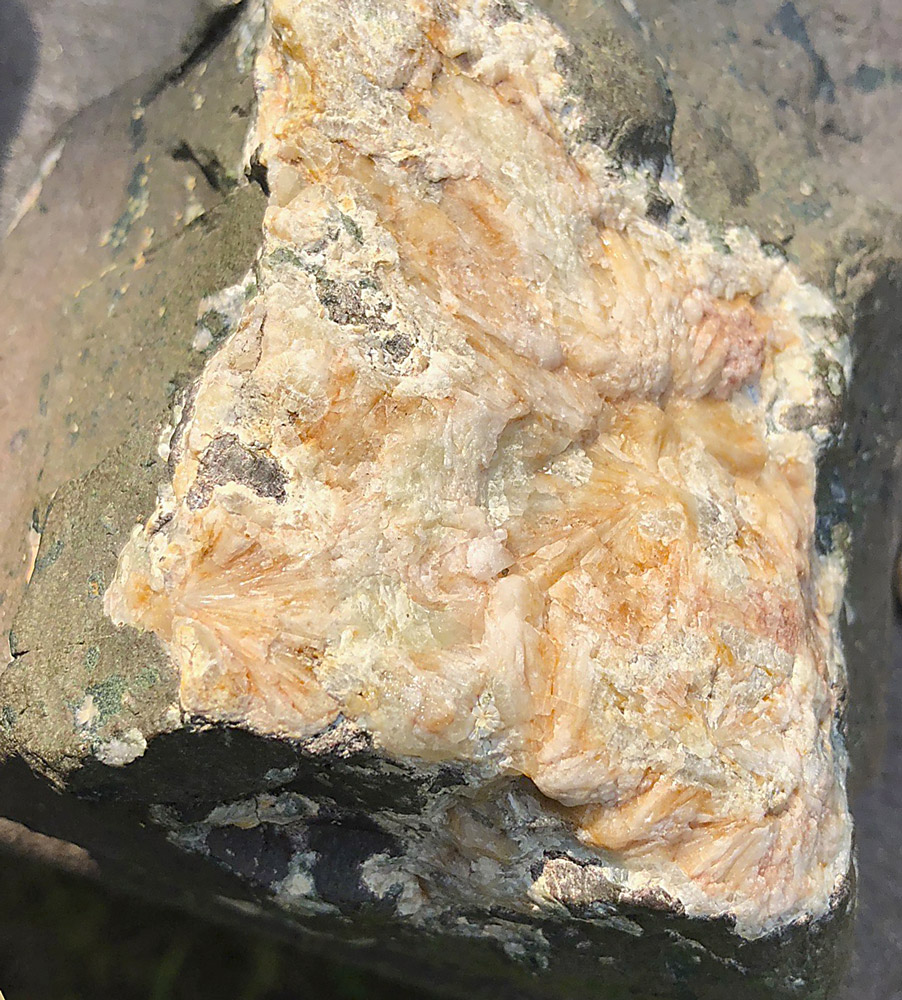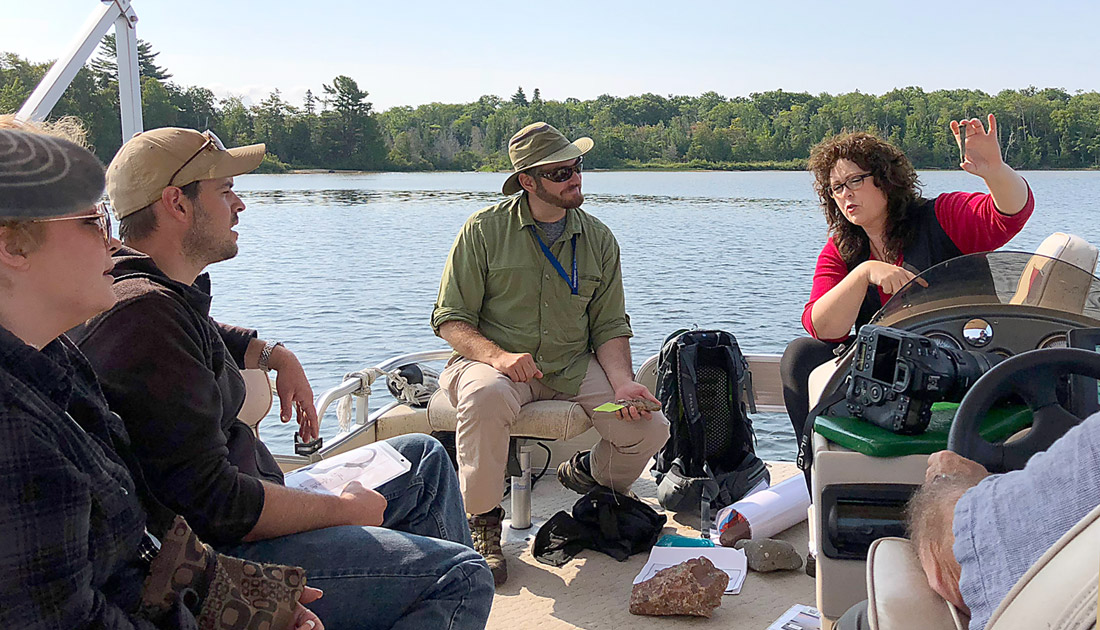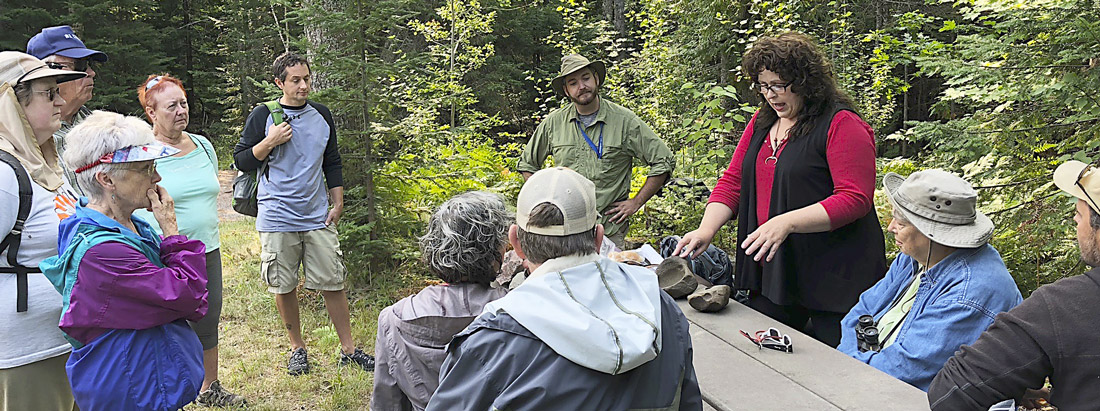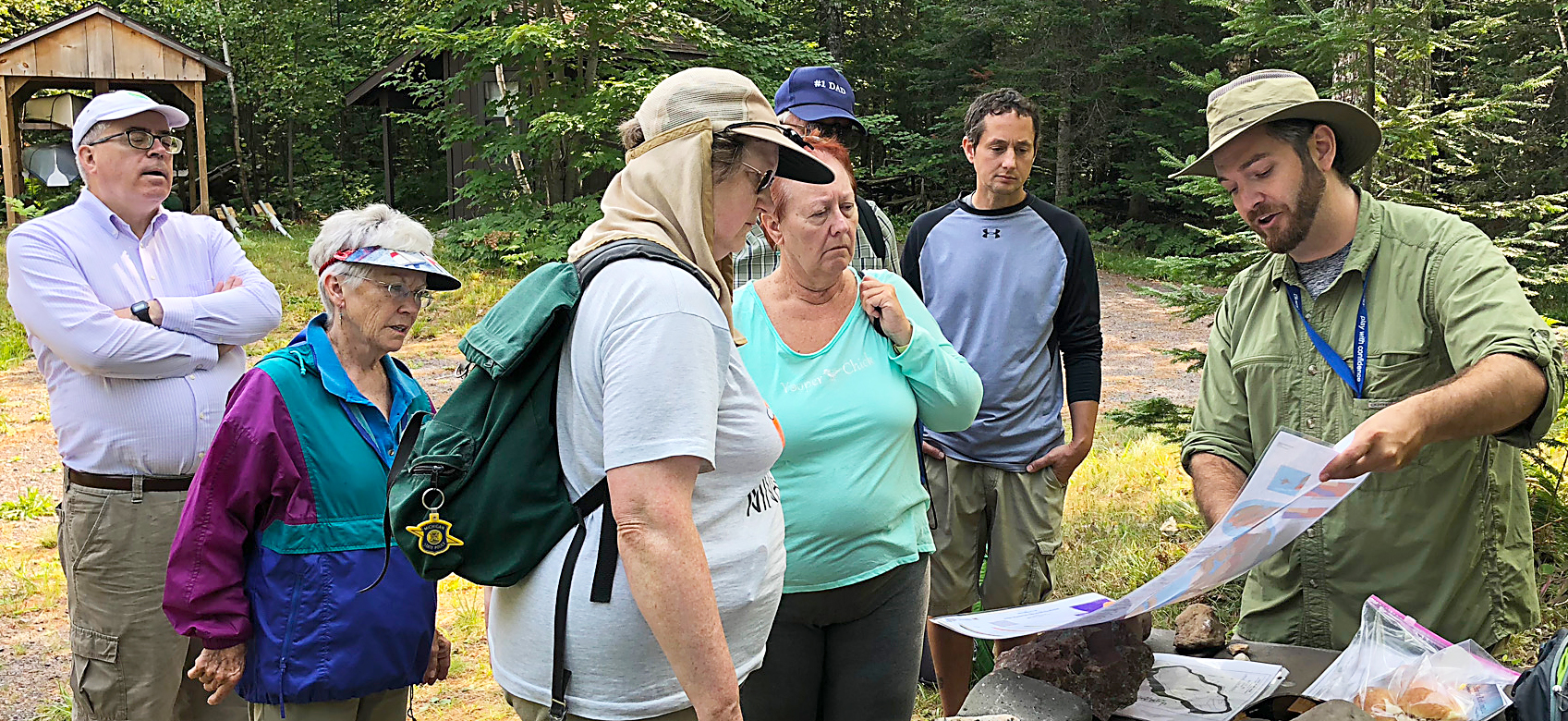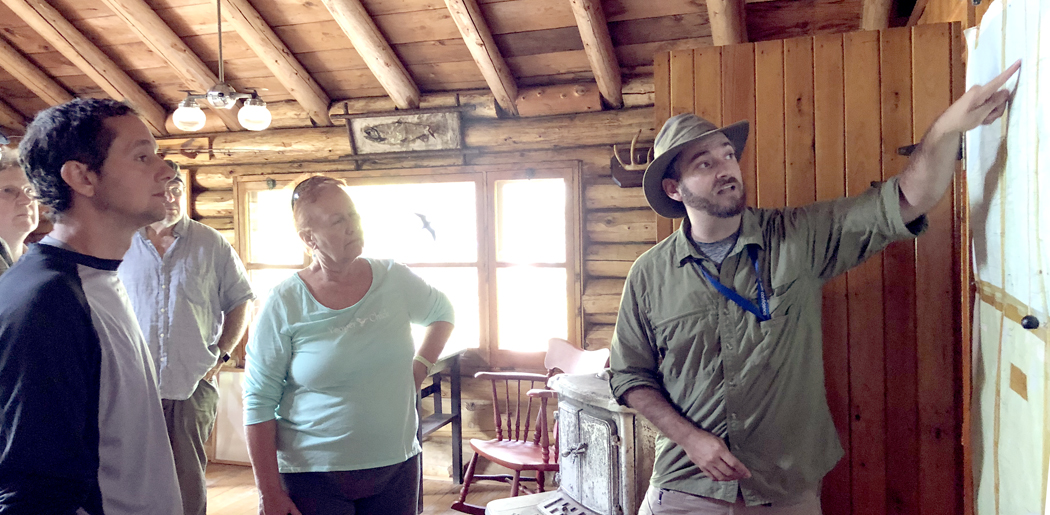In July, Lizzadro Farms Inc. donated additional land to GLC. The 198 acre parcel is indicated on the map below as the gray area in section 4 at the northern tip of the lake. This new GLC land adjoins “Sandy Beach” (the gray area in section 3 below) which was donated to GLC in 2018.
The wooded parcel includes the mouth of Sucker Creek and approximately 3,500 feet of mostly cobble shoreline. Sucker Creek is a high quality feeder stream to Gratiot Lake. Historically, Sucker Creek is known to anglers and eagles alike as a location for springtime smelt and white sucker runs. These fish swim up freshwater streams to breed.
While much of Gratiot Lake is underlain by Jacobsville sandstone, this forested slope steeply rises from the lake on volcanic basalt bedrock. The Keweenaw Fault runs through it, under the tip of Gratiot Lake, and towards Lac LaBelle. The wooded slope meets the narrow shoreline near the lake’s deepest hole (over 70’ in depth). It is hypothesized that during the last Ice Age a glacier rose as much as two miles above the bedrock here and created the deep “plunge pool” as its melt cascaded and scoured into the basin that is now Gratiot Lake.





